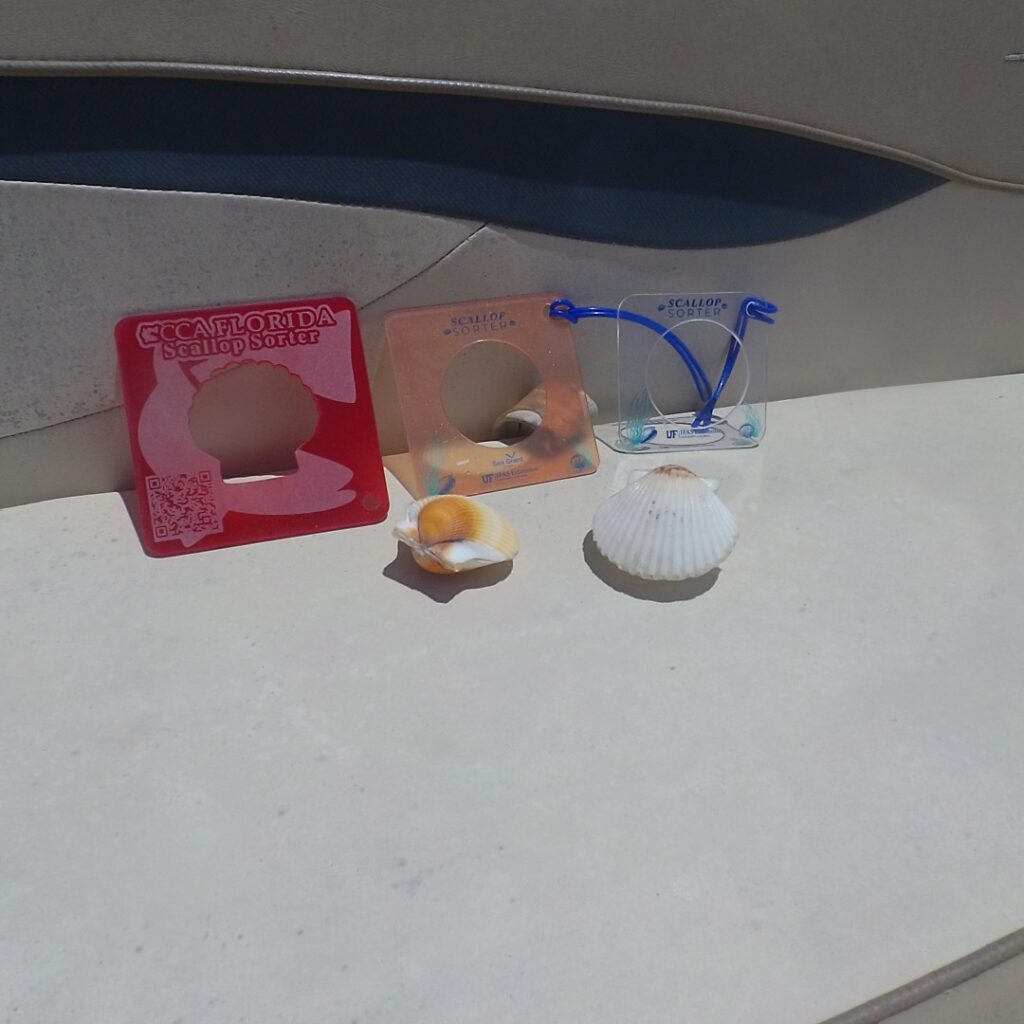Pocket-sized Wonder: Florida Sea Grant Scallop Sorters Shine Brighter and Bigger for Scallop Season – Technologist
The “Gallon shaker” was one of the initial sorter tool prototypes. Image by Victor Blanco.
Determined to find the ideal prototype, Blanco worked with Hall-Scharf, and other collaborating agencies to garner feedback.
The Florida Sea Grant team sought feedback from local captains and residents, ultimately deciding on a smooth circle design with a handle for easy attachment. Hall-Scharf recruited and worked with PED-Staurt, to produce a prototype, which was further refined with input from Florida Sea Grant (FSG) Communications and the FWC. FWC recommended a 1.5-inch hole and helped distribute the sorters.
“We set limits based on what we believe is best for the scallop population. Choosing to further limit your catch or to include only scallops of a certain size or larger continues to benefit the resource,” says Ryan Gandy, Research Administrator at Florida Fish and Wildlife Research Institute.
“The smaller the scallop, the more scallops that must be collected to fill a bag limit. The less meat you get, and the more shucking you need to do, which often leaves people to be less satisfied with their harvest,” adds Gandy.
The original sorter launched in Hernando and Taylor Counties in 2022, with summer staff and FWC personnel distributing stickers and sorters at boat ramps. A survey at the season’s end indicated a preference for increasing the hole size to 2 inches to leave more scallops behind.
Widespread Adoption and Success of Scallop Tool
The 2023 season saw high demand for these tools with the size increase. A total of 1,578 sorters were distributed—nearly double the previous year. By the season’s end, sorters were distributed in 13 counties, up from just three the previous year. Based on surveys, the tools were used on 284 trips, returning almost 3,500 small scallops to the water, which is a conservative estimate since not all trips and scallops returned were captured on the survey. Pasco County even purchased sorters for distribution, and guides and shuckers across several counties adopted the tool.

CCA scallop sorter (pictured far left) with Florida Sea Grant scallop sorters (pictured center and right). Image by Victor Blanco.
“Word spread like wildfire, and folks called, emailed, and visited our office to get the sorter tools. The overwhelming response led to a wider distribution and a preference for a 2-inch hole,” says Hall-Scharf.
Captain Wendy Longman of Windsong Charters and Boat Rental in Pasco County geared up for last year’s season by outfitting each of her 22 rental boats with a two-gallon bucket and a scallop sorter.
Closed for 24 years in Pasco County due to overharvesting, from 1994 to 2018, Captain Longman sees these pocket-sized sorters as a resourceful tool in helping sustain the population of the blue-eyed bivalves for the scallop harvest season.
“It’s like Christmas in July!” says Longman. “When the scallop season reopened for a 10-day trial period in 2018, interest skyrocketed. People couldn’t wait for the first day of the season. It’s getting more and more popular, and this year, we have a 37-day season. These pocket-sized tools are great for ensuring people limit their catch while still enjoying the activity.”
For the 2024 season, the scallop sorter has been updated to an orange and blue design for better visibility in the water. To help with the widespread popularity of the tool, the Coastal Conservation Association (CCA) has funded and printed over 10,000 sorters, donating them to the Steinhatchee Chamber of Commerce. Florida Sea Grant summer staff and FWC will work to distribute and collect data on the sorters at boat ramps in Hernando and Taylor counties.
“As areas like the Big Bend see population growth and more people interact with the coast, the scallop sorter can introduce people to Florida Sea Grant products, informing them about their surrounding environment and guiding choices that benefit their interaction with it,” says Gandy.
Counties along the Big Bend can check with their local UF/IFAS extension offices to stay tuned for more information on local scallop sorter distribution. Can’t get your hands on a scallop sorter? Learn how to make your own using a soda can or PVC ring: https://edis.ifas.ufl.edu/publication/FA26.

